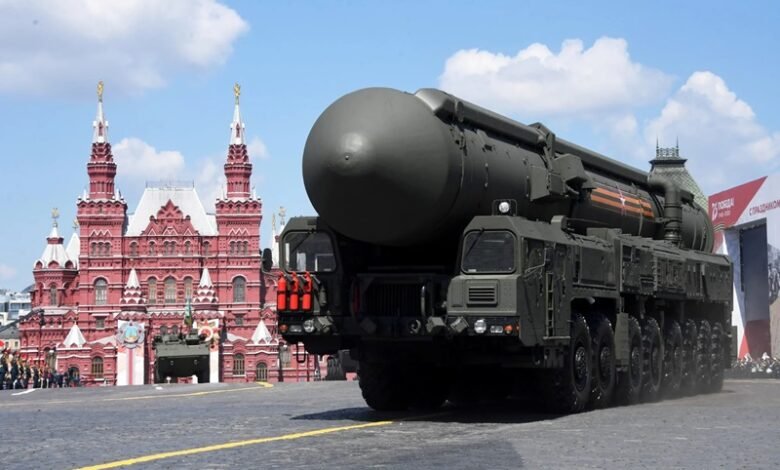
Understanding Russia’s Dead Hand System: The Perimeter Nuclear Command
In the realm of nuclear deterrence, few concepts evoke as much intrigue and concern as Russia’s Dead Hand system, officially known as Perimeter. Developed during the Cold War, this sophisticated command and control mechanism is designed to ensure a retaliatory nuclear strike even if the country’s leadership is incapacitated. This article delves deep into the origins, functionality, and implications of the Dead Hand system, exploring its role in global security dynamics.
The Historical Context of the Dead Hand System
Origins of Cold War Paranoia
The Dead Hand system emerged from a period marked by intense ideological and military rivalry between the United States and the Soviet Union. As tensions escalated, Soviet military strategists feared a decapitation strike—a preemptive attack that could eliminate Soviet leadership and cripple its response capabilities. To counter this threat, they developed Perimeter, a system designed to guarantee a retaliatory strike even in the event of a catastrophic loss of command.
Development and Deployment
The Perimeter system was officially activated in 1985, after extensive testing. It was designed to operate semi-automatically, monitoring various environmental indicators for signs of a nuclear attack. These indicators included seismic activity, radiation levels, and atmospheric pressure changes. If these sensors detected conditions consistent with a nuclear strike and communication with military leaders was severed, Perimeter would initiate a retaliatory response without human intervention.
How the Dead Hand System Works
Functionality Overview
At its core, the Dead Hand system operates through a series of interconnected components designed to maintain command and control over Russia’s nuclear arsenal. Key features include:
- Monitoring Capabilities: Perimeter continuously monitors military communications and environmental conditions for signs of an incoming nuclear attack.
- Automatic Launch Protocols: Upon detecting a potential attack and losing contact with leadership, Perimeter can autonomously launch missiles from silos or submarines.
- Command Rockets: The system employs command rockets equipped with radio warheads that transmit launch orders to nuclear forces across Russia.
Activation Process
The activation of the Dead Hand system is contingent upon several critical conditions:
- System Activation: High-ranking officials must activate Perimeter during heightened tensions or perceived threats.
- Detection of Attack: The system assesses data from its sensors to confirm whether a nuclear strike has occurred.
- Communication Loss: If communication links with military command are severed, Perimeter assumes that leadership has been incapacitated.
- Launch Execution: In the absence of communication, launch authority is transferred to the automated system, which initiates missile launches against perceived aggressors.
Implications for Global Security
Deterrence Strategy
The existence of the Dead Hand system plays a crucial role in Russia’s nuclear deterrence strategy. By ensuring that retaliation is possible even after a devastating first strike, Perimeter serves as a powerful deterrent against potential aggressors. This concept aligns with the doctrine of mutually assured destruction (MAD), which posits that any nuclear attack would result in catastrophic consequences for both attacker and defender.
Risks and Concerns
Despite its intended purpose as a stabilizing force in nuclear strategy, the Dead Hand system raises significant concerns:
- Automatic Response Risks: The potential for an automated response based on misinterpreted data poses risks of accidental nuclear war.
- Lack of Human Oversight: The reliance on automated systems diminishes human judgment in critical decision-making scenarios.
- Escalation of Tensions: The existence of such systems may exacerbate fears among adversaries, leading to an arms race or increased military posturing.
Modernization and Current Status
In recent years, reports suggest that Russia has modernized its nuclear arsenal and command systems, including updates to the Dead Hand mechanism. These enhancements may involve integrating advanced technologies such as radar early warning systems and hypersonic missiles. While details remain sparse due to the secretive nature of Russian military capabilities, experts believe that Perimeter continues to function as an integral part of Russia’s strategic defense posture.
Conclusion
Russia’s Dead Hand system represents one of the most chilling aspects of modern nuclear strategy. As a relic of Cold War paranoia, it underscores the complexities and dangers inherent in automated military systems designed for deterrence. While it serves as a safeguard against potential decapitation strikes, the risks associated with its operation highlight the need for ongoing dialogue about global nuclear stability and arms control. As we navigate an increasingly multipolar world fraught with geopolitical tensions, understanding systems like Perimeter becomes essential for fostering informed discussions about security policies and international relations in an era defined by uncertainty. This comprehensive exploration not only sheds light on Russia’s Dead Hand system but also emphasizes its significance within broader discussions on nuclear deterrence strategies worldwide.
For the latest updates on News and Current Trends, follow us on X/Twitter here.
Infornex is now on every popular social media. Follow us on your favourite one to never miss an update, click here.
For more Breaking News and Updates, click here.



